Welcome to
Biology Lecture
2D says, “Welcome to Biology Lecture.
My name is ‘2D,’ and I’m a Monarch
Butterfly. I know that ‘2D’ seems like kind of a funny name for a Monarch,
but that’s what they named me. Several years ago, Ms. Carter’s General
Biology students helped raise Monarchs for an international research project.
They were able to release all the ‘extra’ Monarchs that weren’t needed for
the actual research project, but I had a broken wing and couldn’t fly. Each
of the Monarchs they released had a little tag with a number on it glued to
one wing. My number was ‘2D,’ so when I couldn’t be released, that became
my name, too. Ms.
Carter fed me sugar water from a teaspoon by gently, carefully uncoiling my
“tongue” until the tip was in the sugar water. Once I tasted that and realized
it was time to eat, I would just stand there siphoning up the sugar water
until I was full.
Because Monarchs like me are living organisms, many of the topics you will
be discussing in General Biology relate to me. Thus, periodically, I’ll
be reappearing to give you my side of the story on whatever topic you’re
reading about at the time.”
General Information
- General Biology is a non-majors’ course sequence. It was designed
for students majoring in areas such as Pre-Elementary Education, Pre-Nursing,
and Pre-Business and for general majors (Liberal Arts) that just require some
science. If you are a Pre-Biology, Pre-Chemistry, Pre-Pharmacy, or
Pre-Medicine/Dentistry/Optometry major, you’ll need
to take the majors’ sequence (34BIOL101), but if you’ve been out of high
school for a long time, you may wish to take one quarter of the General
Biology sequence as a refresher before taking the majors’ sequence. If you’re
a Pre-Secondary Education major, it will depend on what you’re planning on
teaching — check with your advisor!
- I know that many of you have been out of high school for a number of years,
never took science courses in high school, and have been told by other people
that science is supposed to be hard and no fun, and thus you are coming into
this course with preconceived notions that the course will be too hard, you
won’t do well, and it won’t be any fun
for you. However, past students (just like you) have repeatedly told me
while this is not a course that is “a piece of cake” (this is college, after
all) and they had to work hard to master the course material, that the
material was not beyond their comprension and that the course was fun and
do-able.
Be forewarned, though, that this is a college-level course, and to do well
in the course, you must be able to read and write at a college level. If
your placement test scores indicated that you need Preparatory English
courses, I would strongly encourage you to postpone taking this course. If
you can’t read the textbook, your grades will
suffer, and you would be better off getting the proper background before
attempting to take this course.
- Go over the syllabus if you have
not already done so. Note the text we will be using all three quarters:
-
Campbell, Neil A., Lawrence G. Mitchell, Jane B. Reece.
1999. Biology: Concepts and Connections, 3nd Ed. Benjamin/Cummings
Publ. Co., Inc. Menlo Park, CA. (or whatever is the current edition)
-
Make sure you get the right book, because the majors’ text was written by the
same authors. Note the way the text is arranged in topical
sections. Note the optional resource books listed in the syllabus.
- Read the assigned pages before coming to class, and jot down any questions
you may have. After class, go over your notes as soon as possible, filling
in holes and jotting down questions on things that aren’t clear. I will
include a few minutes at
the start of each class for any questions you may have over your reading
and/or material from the last class.
- Tape recorders are OK. It is my experience that students who tape
lectures, then listen to the tapes again while filling in their notes tend
to do better in the course. Many students have also found “flash cards” of
wordstems and definitions to be useful learning aids.
- Experts on education say that there are three styles of learning:
- Dualistic
- The student thinks in terms of right or wrong
answers, black or white. The instructor is seen as an all-knowing
authority in that field.
- Multiplistic
- The student recognizes that there may be
different right answers. The instructor is still seen as an
authority.
- Relativistic
- The student recognizes that there are a
number of possibilitie to consider, and the answer in any given
situation depends on one’s point of view and experiences. The
instructor is seen as more of a guide/facilitator.
Studies have shown that many beginning students, who are unfamiliar with a
subject area, fall into the dualistic category, while many faculty fall more
into the relativistic category. This can be frustrating for students who are
at a point in their
thought process where they’re seeking black and white answers in areas where
there aren’t any. On the other hand, the instructor, in attempting to answer
what are often good, thought-provoking questions, may present several
possibilities that need to be
considered. The studies have shown that this situation leads to a tendency
among those students to think the faculty member doesn’t know anything
and/or is just rambling without a point to make. In all of your courses,
be aware of this possible difference in viewpoint.
What is Biology?
- Biology
is the study of life. As we study biology, we will frequently run across a
lot of “big words” that you will need to learn. One thing that can help you
understand those words, which will also aid you in everything from reading
the newspaper to communicating with your doctor,
is to know the Greek or Latin (or other) derivations of the wordstems which
make up those words. For example, the word “biology” is made from
the wordstems bios, which means “life,” and -logy which means
“to study” or “the study of.”
- Why are you here? Is biology important in your everyday life? How?
What sorts of questions about biology are or should be important to
non-majors, to general people?
- What branches or subdisciplines within biology might have the answers to
those questions? Can you think of any other branches of biology and what
they study? For example. . .
| |
Anatomy |
|
The study of body parts and their locations |
|
ana |
= up |
| tom |
= to cut |
| Botany |
The study of plants |
botan |
= grass, pasture |
| Cytology |
The study of cells |
cyto |
= cell |
| Ecology |
The study of the interrelations between organisms and their environment |
eco |
= house |
| Entomology |
The study of insects |
entomol |
= insect |
| Genetics |
The study of genes and heredity |
gene |
= origin, birth |
| Microbiology |
The study of bacteria and other microscopic organisms |
micro |
= small |
| Molecular Biology |
The study of the various molecules and chemical reactions that take place in organisms |
molecul |
= a little mass |
| Paleontology |
The study of formerly-living organisms like fossils and dinosaurs |
paleo |
= ancient |
| onto |
= being, existing |
| Physiology |
The study of how various body parts function |
physio |
= nature |
| Zoology |
The study of animals |
zoo |
= animal |
| What else can you think of? |
In the General Biology lecture sequence we will cover many of
these topics and talk about many of these branches of biology. In general,
Lecture 1 starts with some background biochemistry and cell physiology, then
goes into DNA, mitosis, meiosis, and genetics. Lecture 2 covers evolution,
plant and animal taxonomy, and ecology. (Lecture 3 includes some human
anatomy and physiology topics which were dropped in favor of more emphasis
on comparative anatomy and physiology among Kingdom Animalia.)
Is it alive?
OK, that’s the easy part, but how do you know they’re alive or not? How
can you tell? What makes the difference? What properties do living
organisms have that makes them alive? Make a list of the things come to your
mind.
The properties that all living organisms share, the things that enable us
to recognize something as being alive, are called the emergent properties
of life. Biologists say that all living organisms have/can do these
things. How does this list compare with your list?
Properties of an Organism:
- Precise Organization
- The various levels of organization include atoms, molecules,
organelles, cells, tissues, organs, systems, whole organisms,
populations, communities, ecosystems, and the biosphere.
“Form follows function” means that the form of a body part or
structure is related to its function.
The form or shape of a structure within an organism is correlated to
the purpose or function of that structure. For example, a bird’s
wing and a human arm are homologous structures and have the same
bones, yet are differently modified to serve different functions.
- Ability to Take in Energy and Use It
- Much of the energy an organism takes in is in the form of food
(= chemicals), thus we’ll need to look at some of the basic chemistry
needed for an organism to be alive.
- Ability to Respond to Stimuli
- Organisms can interact with their environment, including both the
non-living components such as sunlight and other organisms in the
community. All the organisms within a community influence/interact
with each other.
- Capacity for Growth and Development
- Growth and development are guided by DNA, the genetic code. DNA
(deoxyribonucleic acid) is a very unusual chemical because it can
direct the synthesis (manufacture) of more molecules just like
itself, something most chemicals cannot do.
- Ability to Reproduce
- All organisms can only reproduce their own kind, their own
species.
Little flies are not the offspring of big flies or of bees, but of
other little fly parents just like themselves. All organisms are
composed of cells.
- Additional Property of a Population: Ability to Evolve
- A population
is a group of the same species of organism in the same area at the
same time. Sometimes, individuals are born whose genes have changed,
in some way, due to
mutations.
Some of these changes enable the individual to get along better in its
normal environment, while other mutations make survival difficult or
impossible. Those individuals who are best able to survive have a
greater chance of reproducing and passing on their genes, thus the
genetic make-up of the whole population changes over time due to the
environmental pressures that cause some individuals to live and
reproduce while others die.
Evolution
is the changes in the percentages of the various kinds of genes in a
population (and therefore, overall changes in the “looks” and/or
actions of the individuals who have those kinds of genes) over time.
Over the course of the three quarters, we’ll be coming back to these ideas and discussing them in more detail.
The Five Kingdoms
Back when I was in school, biologists recognized two groups of living organisms:
everything was classified as either a plant or an animal. Now, biologists
recognize five main groupings/categories into which all organisms are divided.
Actually, the most recent edition of your textbook splits the bacteria into
several kingdoms, but for our purposes, they are similar enough that we will
consider all of them to be members of Kingdom Monera.
All living organisms can, then, be put into one of these five big groups,
called Kingdoms:
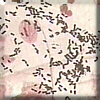 |
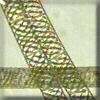 |
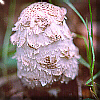 |
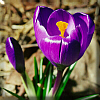 |
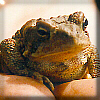 |
| Monera |
Protista |
Fungi |
Plantae |
Animalia |
- Kingdom Monera
- bacteria (one-celled, no true nucleus)
- Kingdom Protista
- algae, seaweed, protozoa (many are one-celled, some colonial, some multicellular; simpler organisms)
- Kingdom Fungi
- mold, mushrooms, yeast, fungus (multicellular; nutrition via absorption of nutrients)
- Kingdom Plantae
- plants (multicellular; nutrition via photosynthesis)
- Kingdom Animalia
- animals (multicellular; nutrition via ingestion of food, followed by digestion)
Within these big groups, there are subdivisions which we’ll discuss later.
References:
Borror, Donald J. 1960. Dictionary of Root Words and Combining Forms. Mayfield Publ. Co.
Campbell, Neil A., Lawrence G. Mitchell, Jane B. Reece. 1999. Biology, 5th Ed. Benjamin/Cummings Publ. Co., Inc. Menlo Park, CA. (plus earlier editions)
Campbell, Neil A., Lawrence G. Mitchell, Jane B. Reece. 1999. Biology: Concepts and Connections, 3rd Ed. Benjamin/Cummings Publ. Co., Inc. Menlo Park, CA. (plus earlier editions)
Marchuk, William N. 1992. A Life Science Lexicon. Wm. C. Brown Publishers, Dubuque, IA.
Copyright © 1996 by J. Stein Carter. All rights reserved.
This page has been accessed  times since 15 Aug 2000.
times since 15 Aug 2000.




